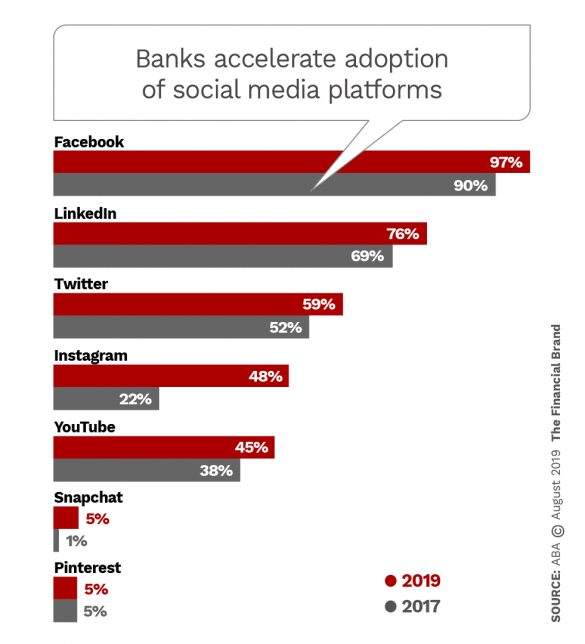SHARE

In today’s digital age, having a strong online presence is crucial for banks looking to stay competitive and meet the evolving needs of their customers. Web development plays a pivotal role in building this online presence, enabling banks to provide a seamless user experience, enhance customer trust, and effectively communicate their brand. In this article, we will explore the importance of online presence for banks and delve into key strategies for successful web development in the banking sector.

(Source: Faster Capital)
Understanding the Importance of Online Presence for Banks
With the rapid advancement of technology, banking has transformed into a digital-first industry. The days of relying solely on brick-and-mortar branches are long gone, as customers now expect convenient access to banking services anytime, anywhere. This shift in customer preferences has made a strong online presence vital for banks.
In addition to the convenience factor, an online presence also allows banks to offer a wider range of services to their customers. From online account management to instant customer support through chatbots, the digital platform opens up a plethora of opportunities for banks to enhance the overall customer experience. Banks can personalise their services and tailor offerings to meet individual customer needs by utilising data analytics and AI technologies.
The Role of Digital Transformation in Banking
The banking sector has undergone a significant digital transformation in recent years. The rise of online banking, mobile apps, and contactless payments has revolutionised the way customers interact with banks. For banks, this digital transformation presents an opportunity to expand their customer base and improve operational efficiency. An effective web development strategy is essential in enabling banks to harness the benefits of digital transformation.
Furthermore, digital transformation in banking goes beyond just customer-facing services. It also encompasses back-end processes such as data management, cybersecurity, and compliance. Banks can streamline their operations, reduce costs, and mitigate risks associated with traditional banking practices as they utilise data analytics and AI technologies.
How a Strong Online Presence Impacts Customer Trust
Building trust with customers is paramount in the banking industry. A robust online presence can significantly impact customer trust by providing a secure and reliable platform for financial transactions. A well-designed and user-friendly website instils confidence in customers, reassuring them of the bank’s credibility and commitment to protecting their sensitive information.
In addition to security measures, an engaging online presence that offers educational resources and financial tools can further enhance customer trust. By providing valuable content and interactive features, banks can position themselves as trusted advisors and partners in their customers’ financial journey. This holistic approach to online banking fosters trust and strengthens customer loyalty in an increasingly competitive market.
(Source: Panamax Inc)
The Fundamentals of Web Development for Banks
When it comes to web development for banks, certain fundamental elements should not be overlooked.
Web development for banks is a complex and crucial process that requires meticulous attention to detail. Banks need to ensure that their websites look professional and function seamlessly to meet the needs of their customers. A well-designed bank website can enhance customer trust and loyalty, ultimately leading to increased business success.
Key Elements of a Bank’s Website
A bank’s website should be designed to cater to the specific needs of its customers. It should provide easy navigation, allowing customers to quickly find the information they need. Additionally, the website should feature intuitive tools for tasks such as online banking, account management, and customer support, ensuring a seamless user experience.
Furthermore, a bank’s website should reflect the institution’s branding and values. The design elements, colour schemes, and imagery used on the website should align with the bank’s overall identity, creating a cohesive and recognisable online presence. Consistency in branding helps to reinforce trust and credibility among customers.
Prioritising Security in Banking Web Development
Security is of utmost importance in the banking industry. Web developers must prioritise implementing robust security measures to protect against potential cyber threats. This includes using encryption technology, secure authentication methods, and regularly conducting vulnerability assessments to ensure the website’s integrity.
Moreover, compliance with industry regulations and standards is essential for banking websites. Banks must adhere to data protection laws and financial regulations to safeguard customer information and maintain legal compliance. Failure to meet these requirements can result in severe penalties and reputational damage for the bank.

( Source: Faster Capital )
Enhancing User Experience in Online Banking
User experience (UX) plays a crucial role in attracting and retaining customers in online banking. Banks must prioritise intuitive design and personalise the user journey to create a seamless digital experience.
Furthermore, banks need to stay updated with the latest trends and technologies to meet the evolving needs of their customers. By incorporating cutting-edge features such as biometric authentication and AI-powered chatbots, banks can enhance security measures and provide efficient customer support, thereby improving the overall user experience.
The Importance of Intuitive Design
An intuitive design ensures that customers can easily navigate the bank’s website and access the services they require. Clear and concise user interfaces, along with logical information architecture, contribute to a positive user experience, reducing frustration and increasing customer satisfaction.
Moreover, banks can utilise data analytics and user feedback to continuously refine their website design and functionality. By conducting usability tests and gathering insights from customer interactions, banks can identify pain points and make informed decisions to enhance the overall user experience.
Mobile Optimisation for Banking Websites
In today’s smartphone-dominated era, mobile optimisation is indispensable for successful web development in the banking sector. Mobile-friendly websites and dedicated banking apps allow customers to conveniently access their accounts, make transactions, and receive real-time notifications. Banks must seamlessly integrate mobile optimisation into their web development strategies to cater to the needs of tech-savvy customers.
Additionally, ensuring cross-device compatibility is crucial to providing a consistent user experience across various platforms. By adopting responsive design principles and leveraging progressive web app technologies, banks can deliver a seamless and unified experience to users, regardless of the device they use to access online banking services.

(Source: OutreachMonks)
Utilising SEO Strategies for Banking Websites
A robust search engine optimisation (SEO) strategy can significantly enhance a bank’s online visibility and attract organic traffic to its website. By incorporating relevant keywords and optimising the website’s content, banks can improve their search engine rankings and ensure that customers can easily find them online.
When it comes to SEO for banking websites, it’s not just about using keywords but also understanding user intent. Banks need to anticipate what their customers are searching for and tailor their content to meet those needs. This customer-centric approach improves SEO and enhances the overall user experience on the website.
The Role of Keywords in Banking Web Content
Using the right keywords throughout a bank’s web content is essential for effective SEO. Keyword research can help identify words and phrases that customers commonly use when searching for banking services. Incorporating these keywords strategically within the website’s content, headings, and metadata can significantly improve search engine rankings.
In addition to using keywords, banks can also leverage long-tail keywords to target specific customer queries. Long-tail keywords are more specific and have less competition, making it easier for banks to rank higher in search results for niche services or products they offer. Banks can broaden their reach and attract a diverse range of customers by incorporating a mix of short-tail and long-tail keywords.
Link-building Strategies for Banking Websites
Link building is a crucial aspect of SEO for banks. Acquiring high-quality backlinks from reputable sources can enhance a bank’s online credibility and visibility. Developing relationships with industry influencers, collaborating on relevant content, and strategically placing links to the bank’s website can all contribute to a successful link-building strategy.
Furthermore, banks can also explore internal linking within their website to improve SEO. Banks can help search engines understand the structure of their website and the relevance of each page by linking related pages together. This improves SEO and enhances the user experience as they guide visitors to more relevant information within the site.

(Source: The Financial Brand)
Social Media and Online Banking
Social media platforms have become powerful tools for engaging with customers and building a bank’s online reputation. Integrating social media into web development strategies allows banks to leverage these platforms for customer engagement and brand promotion.
Leveraging Social Media Platforms for Customer Engagement
Banks can directly engage with customers, answer queries, and address concerns promptly by maintaining an active presence on social media. This level of interaction fosters a sense of trust and enhances the overall customer experience, ultimately strengthening the bank’s online reputation.
The Impact of Social Media on a Bank’s Online Reputation
Social media platforms provide a space for customers to share their experiences and opinions about banks. A positive online reputation is crucial for attracting new customers and retaining existing ones. Monitoring social media channels and responding strategically to feedback is essential in managing a bank’s online reputation effectively.
In conclusion, building a strong online presence through effective web development is vital for banks seeking to thrive in the digital era. Understanding the importance of online presence, prioritising user experience, utilising SEO strategies, and harnessing the power of social media are all fundamental components of successful web development for banks. Banks can enhance customer trust, expand their reach, and stay ahead of the competition by investing in these strategies.
Frequently Asked Questions About Building a Strong Online Presence: Web Development for Banks
Why is web development important for banks?
Web development is crucial for banks as it enhances customer experience, provides secure online services, and improves accessibility, making banking more convenient and efficient for users.
What are the key elements of effective web development for banks?
Key elements include a user-friendly interface, robust security measures, mobile responsiveness, and integration of advanced features like AI chatbots, real-time customer support, and seamless online transaction capabilities.
How can banks ensure their websites are secure?
Banks can ensure website security by implementing strong encryption methods, regular security audits, multi-factor authentication, and staying updated with the latest cybersecurity technologies and compliance regulations.
What trends in web development should banks be aware of in 2024?
In 2024, banks should be aware of trends such as the increased use of AI and machine learning for personalised banking experiences, the rise of voice and gesture-based navigation, and the integration of blockchain technology for enhanced security and transparency.






